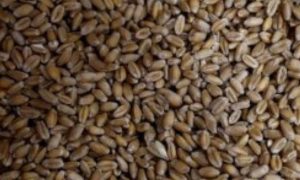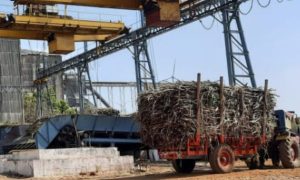Ludhiana,Punjab : Wheat freight loading falls 25% as government procurement drops in district

Ludhiana saw a 25% drop in wheat freight loading this procurement season, with only 42 rakes dispatched compared to 56 last year. The decline stems from reduced government procurement, rising private purchases, expanded storage capacity, faster lifting from mandis, and a slight dip in wheat arrivals. Only 1.2 LMT of wheat was transported, down from 1.5 LMT in 2023.
The district has recorded a 25% decline in wheat freight loading during the recently concluded procurement season, primarily due to reduced purchases by government agencies, officials confirmed on Saturday.
According to official data, only 42 wheat rakes were dispatched from Ludhiana this season, compared to 56 last year. Each rake typically comprises 42 wagons and carries an average of 26,500 metric tonnes of wheat. Consequently, the total wheat transported this season stood at 1.2 lakh metric tonnes (LMT), down from 1.5 LMT last year.
Drop in govt procurement
A senior official from the Food Corporation of India (FCI), speaking on condition of anonymity, said that lower government procurement played a major role in the decline. This year, procurement by government agencies in Ludhiana dropped to 6.48 LMT, compared to 7.15 LMT in the previous season.
“Earlier, our warehouses would quickly fill up and wheat was routinely dispatched to other states to manage space and ensure supply,” the official said. “But with lesser procurement, the need for freight transportation has significantly reduced,” he added.
Private buyers step up
In contrast, private buyers have stepped up, purchasing 1.68 LMT of wheat this season — a 48% jump from last year’s 1.13 LMT. This shift is seen as a key factor in reshaping the local procurement dynamics.
Improved storage eases logistics
Officials also cited improved storage infrastructure as a reason for the reduced reliance on freight. The number of storage units in Ludhiana rose to 102 this year, up from 78. Ludhiana East now has 52 units, while Ludhiana West houses 50, up from 34 and 44, respectively.
This expansion has helped ease pressure on transportation systems by allowing more stock to be stored locally.
Faster lifting of stocks
Another contributing factor is the swifter lifting of wheat from procurement centers. As of now, only 2,820 metric tonnes remain to be lifted from mandis — just 0.35% of the total 8.16 LMT procured.
District food supplies controller (Ludhiana West), Sartaj Singh Cheema, said the administration had anticipated logistical challenges and took early steps to mitigate them. “We increased the number of storage spaces and worked to ensure faster lifting. Wheat arrivals were slightly lower this year at 8.16 LMT, compared to 8.29 LMT last year,” Cheema said.
Why wheat freight loading dropped
Reduced govt procurement
Procurement by govt agencies fell from 7.15 LMT to 6.48 LMT this year (With less stock acquired by govt agencies, the demand for transporting it to other regions dropped)
Rise in private procurement
Private buyers increased purchases by 48%, from 1.13 LMT to 1.68 LMT this year (Private procurement is often stored or used locally, reducing the need for rail transport)
Expansion of storage infra
Storage units increased from 78 to 102 (Enhanced capacity reduced pressure to move stocks quickly via trains)
Faster lifting from mandis
Only 2,820 MT of wheat left in mandis — 0.35% of the total stock (Prompt lifting has minimised the need for bulk railway movement)
Slight dip in wheat arrivals Overall arrivals declined slightly from 8.29 LMT to 8.16 LMT this season (A smaller harvest translates to less grain needing long-distance movement)
To Read more about Wheat News continue reading Agriinsite.com
Source : Hindustan Times















